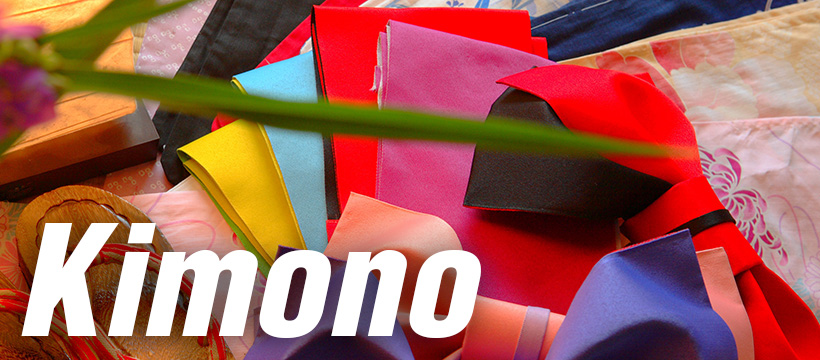
What is a Kimono, จ ?
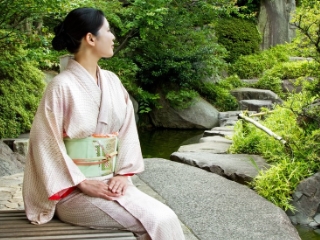
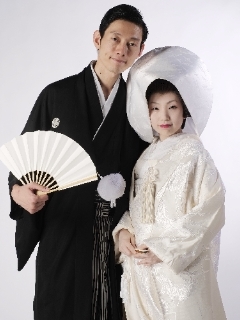
The Kimono is a traditional Japanese dress. The word แKimonoโ, which actually means a แ?thing to wear?โ (Ki
แwearโ and Mono จ แthingโ), has come to denote these full-length robes. In modern day Japan, a Kimono is worn only sparingly or during special occasions such as weddings, tea ceremonies, formal traditional events and funerals.
An appropriate style and colour of Kimono should be worn depending on the occasion and the personfs age and marital status. The price of a Kimono can range from around a few thousands yen for a simple set made of basic fabric to millions of yen for a luxurious silk outfit with intricate embroidery or Yuzen designs. Traditional footwear and a small handbag accompany the outfit for women.
Men's Kimono usually have more subdued colours and are made typically from matte fabrics. Partly for this reason, it is the women's Kimono that generate more interest because their beautiful designs make them art pieces as much as they are garments. The women's Kimono is traditionally made of silk, but these days they are also made of polyester. Decoration techniques include embroidery, Yuzen painting and dyeing.
Men mainly wear the Kimono at weddings, tea ceremonies, and other very special or very formal occasions. Professional Sumo wrestlers are often seen wearing the Kimono because they are required to wear traditional Japanese dress whenever appearing in public
An appropriate style and colour of Kimono should be worn depending on the occasion and the personfs age and marital status. The price of a Kimono can range from around a few thousands yen for a simple set made of basic fabric to millions of yen for a luxurious silk outfit with intricate embroidery or Yuzen designs. Traditional footwear and a small handbag accompany the outfit for women.
Men's Kimono usually have more subdued colours and are made typically from matte fabrics. Partly for this reason, it is the women's Kimono that generate more interest because their beautiful designs make them art pieces as much as they are garments. The women's Kimono is traditionally made of silk, but these days they are also made of polyester. Decoration techniques include embroidery, Yuzen painting and dyeing.
Men mainly wear the Kimono at weddings, tea ceremonies, and other very special or very formal occasions. Professional Sumo wrestlers are often seen wearing the Kimono because they are required to wear traditional Japanese dress whenever appearing in public

Breakdown of a Kimono
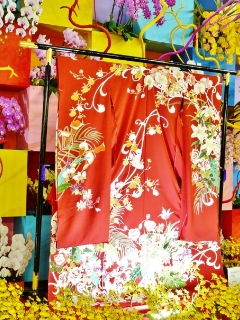
Kimono are T-shaped, straight-lined robes worn so that the hem falls to the ankle, with attached collars and long, wide sleeves. Kimono are wrapped around the body, always with the left side over the right (except when dressing the dead for burial) and secured by a sash called an gObih, which is tied at the back. Kimono are generally worn with traditional footwear (gZorih or gGetah) and split-toe socks (gTabih).
What is a Yukata (฿) ?
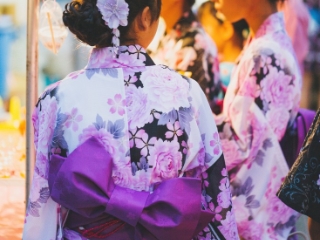
A Yukata is a casual Kimono-like garment worn during the summer. A Yukata ensemble consists of a cotton undergarment (gJubanh), the Yukata, an gObih (sash), bare foot sandals (gGetah), a foldable or fixed hand fan and a carry bag (gKinchakuh used by both men and women to carry cell phones and other small personal items).
A Yukata ? ฿- literally means bath(ing) ? ? clothes ? ฿ -, although their use is not limited to after-bath wear. Yukata are a common sight in Japan during the hot summer months, especially for summer events like firework festivals.
A Yukata ? ฿- literally means bath(ing) ? ? clothes ? ฿ -, although their use is not limited to after-bath wear. Yukata are a common sight in Japan during the hot summer months, especially for summer events like firework festivals.
What is the difference between a Yukata and a Kimono?
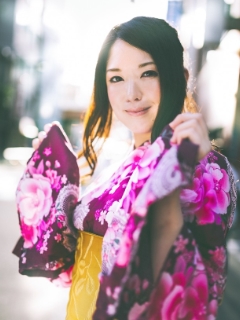
Both the Kimono and the Yukata are traditional Japanese garments that have charmed people around the world with their beauty, style and traditional aesthetic. There are many specific rules for both when and how to wear a Kimono and a Yukata, known as gKitsukeh. The rules for wearing a Kimono are much stricter as they are considered to be formal wear, while rules for wearing a Yukata are more informal.



